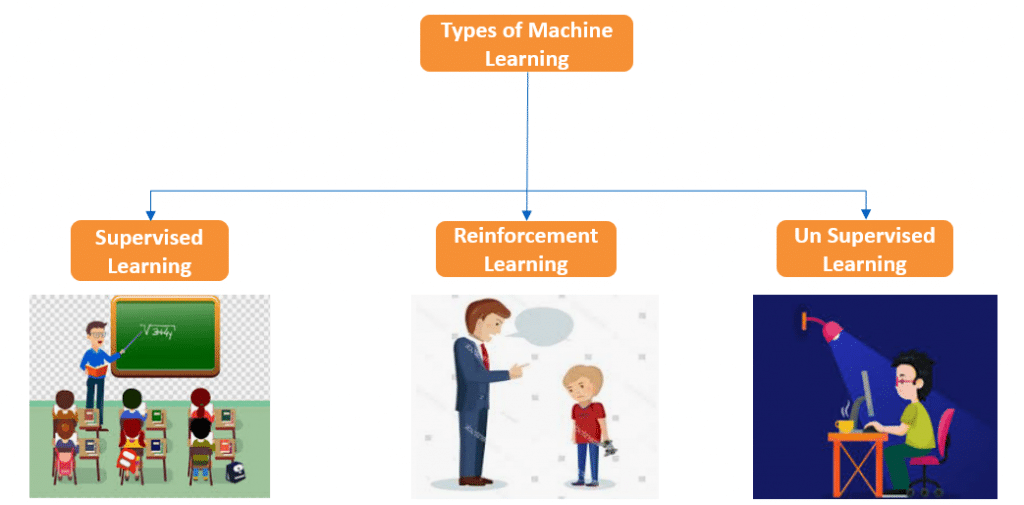Today, the world is moving at a rapid pace driven mainly by changing technologies. These changes have made our life simpler and faster. In this article, we will understand how Machine Learning is making a significant impact on our life.
What is Machine Learning (ML)?
ML is a scientific study of algorithms and models of data. These algorithms and models perform a particular task themselves. Such tasks complete without giving explicit instructions to a computer system. In this process, patterns, continuous teaching, and interfaces enable them to make decisions using data. It is the branch of computer science. In short, it deals with the development of computer programs that teach and perform themselves.
Features of Machine Learning
- Uses data to detect patterns in a data set and adjusts program actions accordingly
- Focuses on the development of programs. Such programs can teach themselves and can grow and change when exposed to new data
- It enables computers to find out hidden insights. These Hidden insights are explored using iterative algorithms and without being explicitly programmed.
- Data analysis methods that automate analytical model building.
Recommended for You:
- 10 Best Artificial Intelligence Online Course to Boost Your Career
- Digital Marketing- The Changing Approach to Marketing
- Best Online Courses for Cloud Computing in India
- What are the Advantages of Python Programming Language?
- What are the Trending Technologies in 2022?
- Which are the most promising & in-demand skills?
- The 6 Best Email Marketing Courses Online in India
Machine Learning Algorithms

ML uses certain types of algorithms, which creates a natural pattern in its memory. Broadly, it has been classified into three categories-
Supervised Learning
As the name suggests, in supervised learning, the machine is trained under supervision by using data, which is well “labeled.” It means that some data is already tagged with the correct answer. In the beginning, the machine gets trained with the input data as well as the output data. Hence, appropriate rules map input and output. Once the machine gets trained, it is provided with a new set of data. That way, the supervised learning algorithm analyzes the given data based on the training provided and produces a correct outcome.
Recommended for You: 6 Best Handpicked Online Training and Certification Courses for Mastering Email Marketing
Supervised learning gets further classified into two groups-
Classification
In this case, the output variable is a category. For example, “dark” or “bright” or “pass” and “fail.”
Regression
In this case, the output variable is a real value. For example, “height” or “width.”
Un-Supervised Learning
In this technique, the machine is trained with unlabeled data. The machine works on its own and discovers hidden structures and information. It mainly deals with unlabeled and unstructured data.
Unsupervised machine learning output can be applied in supervised machine learning techniques. The input data here may help with better-reproduced outputs. Unsupervised learning helps to find structures that can be useful for categorization.
Some of the applications of unsupervised learning are-
- Clustering
- Anomaly detection
- Association mining
- Latent variable models
Reinforcement Learning
In the reinforcement learning algorithm, the machine gets trained through a system of reward and punishment. In this technique, the machine receives rewards for correct output and penalties for giving incorrect output. That way, the machine learns without human intervention by maximizing its reward and minimizing its penalty.
Advantages of Machine Learning
ML has evolved to solve the real problems of human life. It automates the processes used in multiple industries like banking, retail, healthcare, defense, telecom, etc. At present, machine learning has become one of the extensively used technology.
Across sectors
Multiple industries use ML applications. This includes the financial sector, healthcare, retail, social media, e-commerce, robots, automation, gaming applications, etc.
In advertising
In our daily life, we use social media, where ML plays a prominent role. We often observe that Facebook and Google show relevant advertisements based on their previous search activity. This happens due to the machine learning algorithm. Similarly, the suggested videos on YouTube are also an example of an ML application. No doubt, machine-learning technology provides better results.
Multi-variety and multi-dimensional data
ML is capable of handling multi-variety and multi-dimensional data in a dynamic or unfavorable environment. Hence, it helps in the reduction of the time cycle and proper utilization of the resource.
Recommended for You: 6 Best online training, certification, and specialization courses to become an SEO expert
Quality improvement in a long and complicated process
ML technology is capable of creating tools that help in continuous quality improvement in a long and complicated process.
Leveraged in enhance customer experience and business performance
This includes dynamic pricing, chatbots, a 360-degree view of the customer, recommendations, customer sentiment analysis, etc.
Conclusion
Machine Learning is instrumental in connecting computer systems with human life. It helps in solving real-world problems and automating processes. ML evolution has played a significant role in enhancing and developing Machine intelligence as future intelligence. Due to these reasons, it is ‘the technology’ for mainstream adoption in the years to come.
Find the best books here to learn Machine leaning.
- Best Courses for Python Online in India 2022
- 6 Best online training and tutorial courses to learn Digital Marketing
- Best Courses for RPA
- 7 Best Agile Training & Certification Courses Online
- 7 Best Online Training and Certification Courses for Java
- Popular Programming Languages for Generate Jobs and Good Salary
- Best Online Courses to Become an Expert in SEO
